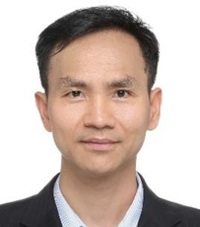Special Session 3: High-Precision Detection and High-Resolution Imaging Technology for High-Speed Moving Targets
This topic aims to explore and discuss high-precision detection and imaging technologies for high-speed moving targets. It analyzes the impact of factors such as the extremely high velocities of targets, unknown orbital changes, and attitude adjustments on high-precision detection and imaging during the detection, tracking, and imaging of space targets, ballistic targets, and maneuvering high-speed moving targets. Additionally, the study investigates how to fully exploit the motion characteristics and constraints of targets to develop target detection and imaging systems. This involves creating novel signal and information processing methods, as well as advanced imaging techniques, to enhance target detection accuracy and imaging resolution:
Related topics:
High-speed moving target detection and tracking;
• Multi-station joint detection;
• Target tracking filtering;
• Trajectory variation perception;
• High-resolution imaging of maneuvering targets;
• Multi-station joint imaging;
• Interferometric imaging;
• Attitude anomaly perception;
• Intelligent signal processing, etc;
The manuscript should be submitted via the submission link (http://www.easychair.org/conferences/?conf=icsip2026), or to icsip2016@vip.163.com before the submission deadline (February 5, 2026).
Special Session Chairs:

Junling Wang, Beijing Institute of Technology, China
Wang Junling received the B.E. and M.S. degrees from China University of Petroleum, Qingdao, China, in 2005 and in 2008, respectively, and the Ph.D. degree from Beijing Institute of Technology (BIT), in 2013. He was an exchange student in Department of Signal Theory and Communications, Universitat Politecnica de Catalunya in 2010. Since 2013, he has been working with the School of Information and Electronics, BIT, Beijing, China, where he is currently an Associate Professor. His current research interests include radar signal processing, space target detection and imaging, space situational awareness, and related fields. He spearheaded the development of China's first bistatic ISAR imaging system for space targets and achieved the country's first successful acquisition of interferometric three-dimensional images of space objects. He has published over 70 SCI/EI-indexed papers as first author or corresponding author in prestigious international journals and conferences such as IEEE TAES、IEEE TGRS、IEEE SENS J、J GUID CONTROL DYNAM、IET RADAR SONAR NAV.、CHINA COM. Additionally, he holds over 20 authorized patents.

Defeng Chen, Beijing Institute of Technology, China
Defeng Chen was born in Longyan, China, in 1983. He received the B.S. and Ph.D. degrees in electronic engineering from the Beijing Institute of Technology, Beijing, China, in 2006 and 2011, respectively. He is currently an Associate Professor with the School of Information and Electronics, Beijing Institute of Technology. His research interests include radar signal processing and its applications in space target detection.

Lizhi Zhao, Minzu University of China, China
Lizhi Zhao received her B.E. degree from Hebei University of Technology in 2008 and her Ph.D. degree from Beijing Institute of Technology in 2015. In 2013, she was a joint training student at the University of Pisa. She is currently a lecturer at Minzu University of China, Beijing. Her research interests include radar imaging and radar signal processing.

